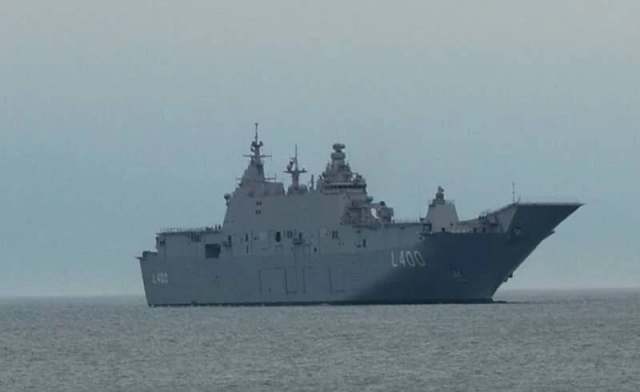
Image source: topwar.ru
The Turkish fleet was replenished with the L 400 Anadolu universal landing ship, the transfer of the UDC took place without a solemn ceremony and official statements of the Turkish Defense Industry Department. This is reported by Naval News with reference to the Turkish press.
The first reports about the transfer of the L 400 Anadolu UDC appeared on March 5, Sunday, the Turkish press wrote about it. At the same time, no ceremonies were held, which is not typical for Turkey. Most likely, this is due to the last earthquake, now Ankara is not up to celebrations. At the same time, the Turkish Defense Ministry last Monday announced the preparation of the UDC crew for deployment, which means the actual transfer of the ship to the fleet. Earlier, sources in the Turkish industry announced plans to transfer the ship in January 2023.
The L 400 Anadolu UDC was built at the Sedef Tuzla Tersanesi shipyard in Tuzla under a contract with the Turkish Ministry of Defense in 2015 under the project of the Spanish shipbuilding association Navantia and is actually an analogue of the Juan Carlos I UDC previously built for the Spanish Navy. The ship was to become the first Turkish UDC carrier of American fifth-generation F-35B fighters with a shortened takeoff and vertical landing. However, the events that have taken place have deprived Turkey of American aircraft, so the Bayraktar TB3 and Bayraktar Kizilelma (MIUS) drones specially designed for the UDC will take the place of the F-35B. The helicopter group should include 12 NH-90 helicopters. Also last year, plans were announced to develop a deck version of the Turkish jet combat training aircraft TAI Hürjet.
The length of the UDC is 230 m, width (on the flight deck) is 32 m, draft is 7 m, displacement is 28,000 tons. The maximum speed is 22 knots, the range at a speed of 15 knots is 9,000 miles. The ship accommodates 900 infantry with equipment, 46 tanks or 77 wheeled vehicles and four LCM landing boats (or two medium boats, or one hovercraft) for landing equipment and manpower ashore. It has almost no weapons, except for several installations of ESSM anti-aircraft missiles and anti-aircraft "Erlikons".
